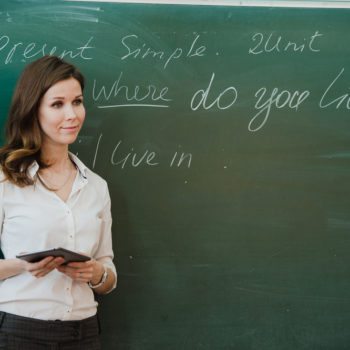Why We Love It
-
$92,940Potential Avg. Salary
-
5.8%Job Growth Rate
-
Growing DemandJob Outlook
-
Fast Paced CareerCareer Attribute
Junior high principals serve as the main leaders of schools that serve students in grades 6-8. They manage school teachers and staff, set educational and learning goals and standards, and work with members of the community and government to secure funding and support for school initiatives.
Recommended Schools
What is a Junior High Principal?
The following job responsibilities are common for individuals in junior high principal roles:
- Manage teachers and staff, and provide support to middle school students, their parents, and other community members that are involved with the school
- Set educational and learning goals by developing standards for curriculums, establishing the vision for programs, and monitoring learning environments
- Serve as the ultimate point of contact when student disciplinary issues require support beyond what teachers and assistant principals can manage
- Create schedules for classes and teachers before the start of the school year, fill open positions, and set support staff schedules
- Manage school budgets and provide progress reports to superintendents, parents, and community members
A Day in the Life
Day-to-day responsibilities of a junior high principal will vary based on the size of the school the principal manages. In large schools, principals generally have one or more assistant principals and several administrative staff members that handle smaller tasks. In smaller schools, middle school principals may be responsible for small daily tasks and administration as well as larger school and community management issues.
Junior high principals are the ultimate leaders of a junior high school and are accountable for the success of its students and staff. As such, they’re responsible for recruiting and hiring effective teachers and staff members, evaluating students and staff abilities and progress, and ensuring school curriculums support student learning and enable students to excel on standardized tests. They create class schedules and programs and ensure teachers have the tools they need to be successful.
Junior high principals also work closely with school board officials, community members, and governing entities to secure funding for school repairs, new and existing programs, and upgrades. For private schools, junior high principals have an active role in promoting the school to the community to drive enrollments. In public schools, junior high principals serve as school spokesmen—highlighting the accomplishments of the school and its students to improve community perception of the institution.
Typical Work Schedule
Junior high principals generally work at times when school is in session, but they’re also required occasionally to attend community and school events after school or on weekends. Additionally, while middle school principals may get some time off over the summer, they often must work for a significant portion of the summer to prepare for the next school year.
Career Progression
- Early Career: Junior High Teacher
- Mid-Career: Assistant Principal, Junior High Principal
- Late Career: District Superintendent, Instructional Coordinator
Typical Employers
Junior high principals are employed by both public and private middle schools. Public school principals are employed by the state or local government for their district, and private school principals are employed by the organization or church that operates the school.
Recommended Schools
How To Become a Junior High Principal
To become a junior high principal, you’ll first need to work as a teacher in a middle school, teaching a subject to 6th, 7th, and/or 8th grade students. To become certified as a teacher, you’ll need to pursue a bachelor’s degree in education with a focus on the subject you want to teach. A bachelor’s degree in education will culminate in a teaching certification that’s a requirement for teaching at a public school. Private schools may or may not require teachers to be certified.
After teaching for several years, most aspiring junior high principals move up in their careers by serving as assistant principals. To become an assistant principal, a master’s degree in educational leadership and administration is generally required. Many teachers use the continuing education requirements of their teaching licenses to pursue master’s degrees in order to fulfill certification requirements and expand career options concurrently.
After earning a master’s degree and gaining several years of experience as an assistant principal or other administrator, you may qualify for open principal roles. It will be important to have a portfolio of successful programs and initiatives when apply for junior high principal roles to prove you have the experience, dedication, leadership skills, and innovative attitude required for the role.
Junior High Principal Salary Data
We’ve provided you the following to learn more about this career. The salary and growth data on this page comes from recently published Bureau of Labor Statistics data while the recommendations and editorial content are based on our research.
National Anual Salary
Low Range
$72,380Average
$92,940High Range
$131,310National Hourly Wage
Low Range
---Average
---High Range
---How do Junior High Principal salaries stack up to other jobs across the country? Based on the latest jobs data nationwide, Junior High Principal's can make an average annual salary of $92,940, or --- per hour. On the lower end, they can make $72,380 or --- per hour, perhaps when just starting out or based on the state you live in.
Salary Rankings And Facts
#88 Nationally for All Careers
Above Average Salary Nationally
Programs and Degrees
Here are the most common degrees for becoming a Junior High Principal. a is usually recommended and specifically a degree or coursework that prepares you for the particular field, see below.
Highest Education Among Junior High Principals
- 13.2% Doctorate
- 44.8% Masters
- 23.5% Bachelors
- 5% Associates
- 8% College
- 4.6% High School
- 0.7% Less than High School
Job Growth Projections and Forecast
2014 Total Jobs
240,0002024 Est. Jobs
254,000Job Growth Rate
5.8%Est. New Jobs
14,000How does Junior High Principal job growth stack up to other jobs across the country? By 2024, there will be a change of 14,000 jobs for a total of 254,000 people employed in the career nationwide. This is a 5.8% change in growth over the next ten years, giving the career a growth rate nationwide of Above Average.
Growth Rankings And Facts
#390 Nationally for All Careers
Above Avg. Growth Nationally
What Companies Employ The Most Junior High Principals
| Industry | Current Jobs | New Jobs Needed | % Increase |
|---|---|---|---|
| Elementary and secondary schools; local | 187,400 | 11,000 | 11% |
| Elementary and secondary schools; private | 37,500 | 2,300 | 2% |
| Self-employed workers | 5,100 | 200 | 0% |














